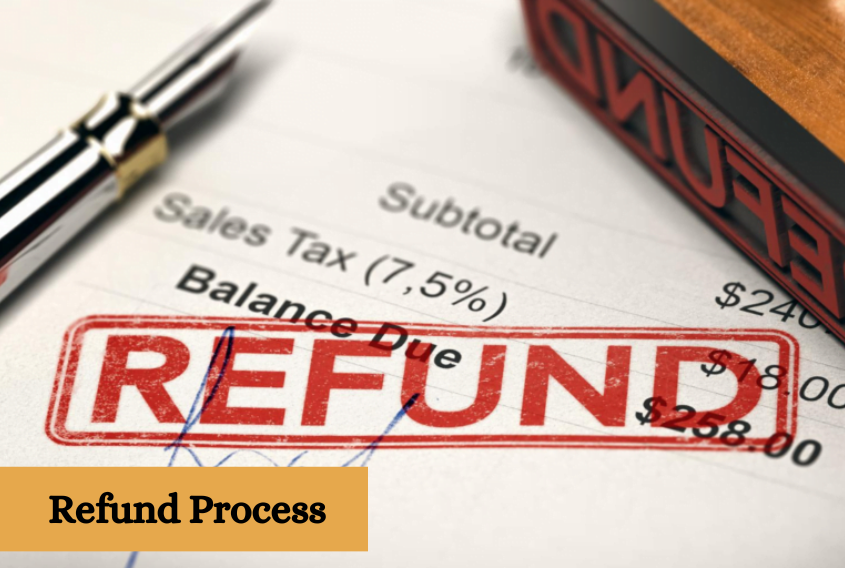Refund Process
The refund process typically involves several steps to ensure a smooth and efficient resolution for both the customer and the business. Firstly, the customer initiates the refund request, usually by contacting customer support or through an online platform. The customer may be required to provide details such as the order number, reason for the refund, and any supporting documentation. Once the request is received, the business reviews the request to determine its validity and adherence to the refund policy. If approved, the business processes the refund using the original payment method, and a confirmation is sent to the customer. In some cases, there may be a waiting period for the funds to be returned to the customer’s account. Throughout this process, effective communication between the customer and the business is crucial to address any concerns or provide updates on the status of the refund. Additionally, businesses often use this feedback to improve their products or services, contributing to overall customer satisfaction.

What is the Procedure to Get Refund?
Obtaining a refund in taxation usually entails following specific processes prescribed by the tax authorities. The precise procedure may differ depending on the country and its tax laws, but here is a general overview:
- Eligibility Check: Verify if you qualify for a refund of taxes. Overpayment of taxes, tax credits, deductions, or other relevant factors may be the cause of this.
- Complete and Submit Forms: To be eligible for a refund, you must fill out particular papers from most tax authorities. Typically, these forms ask for information about your earnings, outlays, and any pertinent records. Make sure the information you supply is accurate and comprehensive.
- Submission Deadline: Recognize when refund claims or tax returns must be submitted. If the deadline is missed, there could be fines or you won’t be eligible for a refund.
- Documentation: Attach all necessary supporting documentation, including invoices, receipts, W-2 forms, and any other pertinent documentation that supports your claim.
- Filing Method: Depending on the jurisdiction, you may need to submit your refund application electronically or traditionally in paper form. Follow the method prescribed by the tax authority.
- Verification and Processing: Once your application has been submitted, the tax authority will check the information provided. This process may take some time and additional documents or clarifications may be requested.
- Communication: Find out the status of your refund. Some tax authorities provide online portals or hotlines to verify the status of your refund.
- Receive Refund: If your refund claim is approved, the tax authority will issue your refund. This can take the form of a direct deposit, a check, or another mechanism determined by the tax office.
- Appeals: If your refund application is rejected, you may be able to lodge an appeal. Follow the tax authority’s appeal procedure and submit further documents if necessary.
How Do I Check My Refund Process?
Checking the status of your tax refund usually involves using the official channels provided by the tax authority in your jurisdiction. Here’s a general guide, but keep in mind that specific procedures may vary depending on your location:
- Online Portal: Many tax authorities provide online sites where you may track the progress of your tax refund. Log in to your account on the official website and search for a section about refunds or the status of your return. To obtain this information, you may be required to give certain personal information as well as details from your tax return.
- Automated Phone System: Some tax authorities offer automated phone systems where you can check the status of your refund. Call the authorized phone number and follow the prompts to inquire about the status of your refund request. Keep your tax return information handy, as you may need to submit some details.
- Mobile Apps: In some regions, tax authorities provide mobile apps that allow you to easily access your tax information, including the status of your refund. Download and install the official app and follow the instructions to check your refund.
- Email or Mail Notifications: Some tax authorities send email or postal notifications about the status of your refund. Check your email inbox or post for updates or correspondence with the tax authority.
- Tax Professional Assistance: If you filed your taxes with a tax professional or an accounting firm, they may be able to give you with information about the status of your refund. Reach out to them for help.
- Taxpayer Assistance Services: Contact the tax authority’s support programs for taxpayers. This may include visiting your local tax office or calling the customer hotline to determine your refund status.
When checking your refund status, be prepared to provide information such as your Social Security Number (or equivalent identification number), the exact amount of the refund you expect, and any confirmation or reference numbers related to your tax return.
Need assistance or have questions about our services?
Please do not hesitate to contact us.
